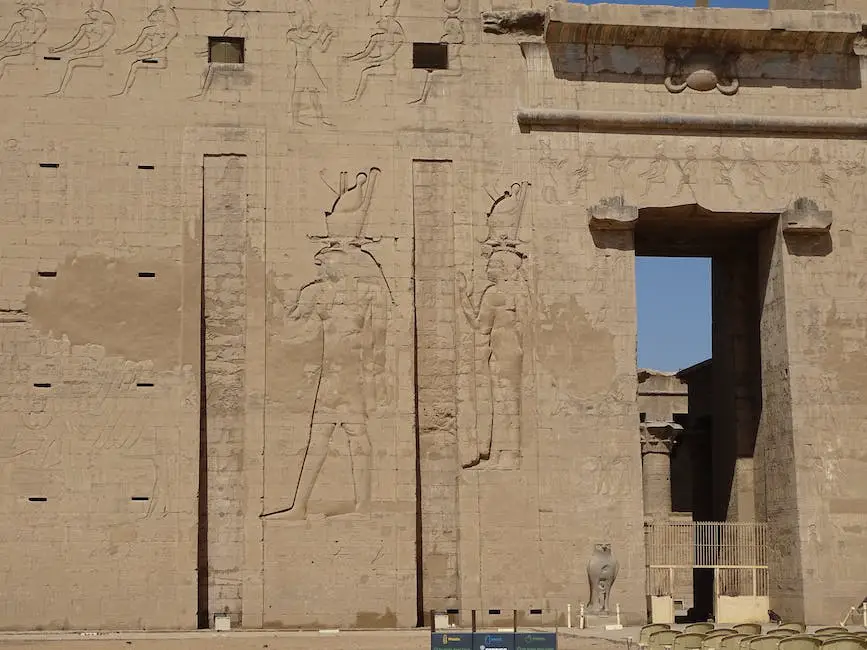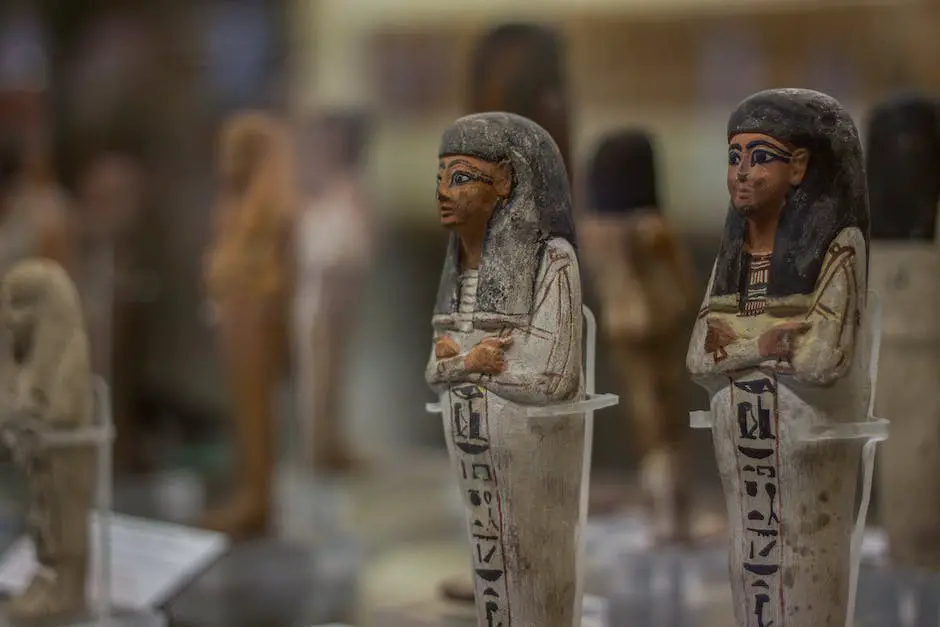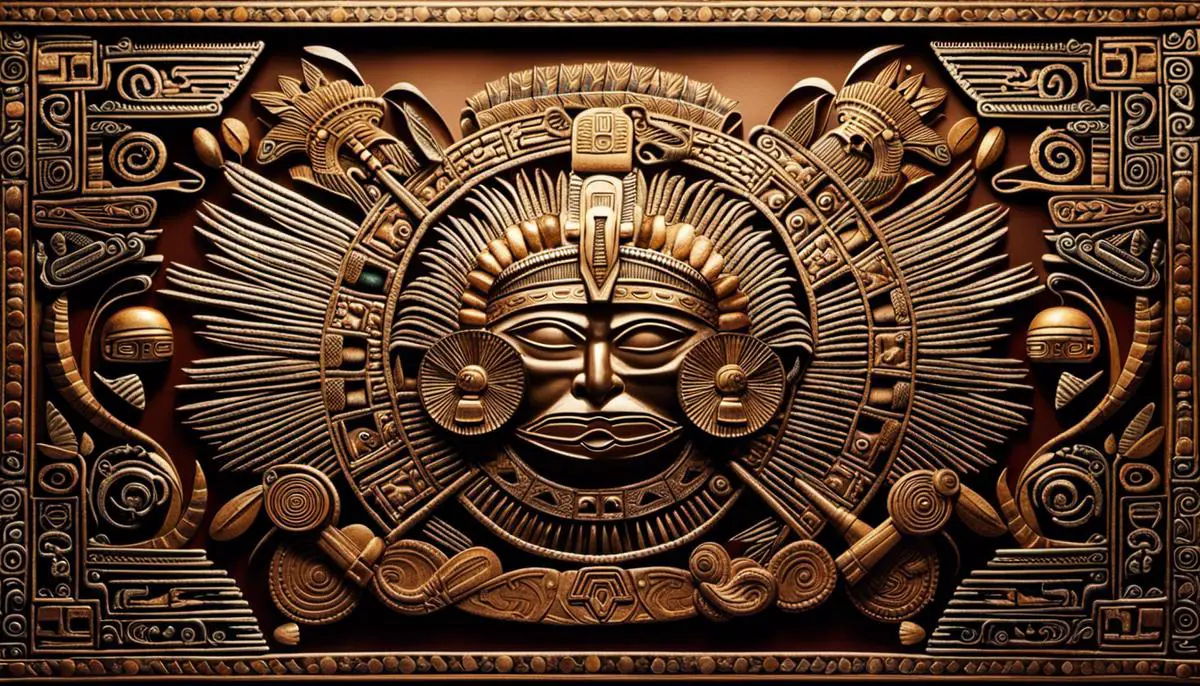In the sphere of board gaming, a world unfolds before players, rich in intricacies of narratives, vibrant with compelling characters, and often teeming in symbolism. As game designers, we explore various cultures and histories to instill a sense of wonder and immersion. Among those deeply enriched cultures, Aztec mythology, a treasure of the ancient Mesoamerican civilization, tends to capture the imagination with its profound symbols and narratives. As board game enthusiasts, dipping our toes in the captivating waters of Aztec mythology and learning how to sustainably embed these elements into our games can mark a captivating journey, not only adding layers of complexity to the games but simultaneously respecting and promoting this vibrant culture.
Understanding Aztec Mythology
Understanding Aztec Mythology: A Rich Tapestry of Divine Beings and Epic Narratives
Aztec mythology is a vast and complex system of beliefs that formed the foundation of the Aztec culture. At the core of this mythology are the numerous deities, each associated with a specific element or aspect of life. Gods like the feathered serpent Quetzalcoatl, the deity of wind, air, and learning, or Huitzilopochtli, the god of the sun and war, are integral figures of Aztec mythology.
Key Figures in Aztec Mythology
Quetzalcoatl and Huitzilopochtli are among the dozens of gods that constitute the Aztec pantheon. Other notable deities include Tlaloc, the god of rain and fertility; Tezcatlipoca, the god of night, sorcery and destiny; Xipe Totec, the god of force, war, and agriculture; and Tonatiuh, who governs the movement of the sun. Each deity has its own rich lore and symbolism, providing a wealth of inspiration for board game themes and mechanics.
Symbolic Elements in Aztec Mythology
Not just the deities, but symbolic elements like the four directions (north, south, east, west), the earth and the sky, color symbolism, and sacred animals hold significance in Aztec mythology. For example, the east was represented by a red Tezcatlipoca, the south by a blue Huitzilopochtli, the west by a white Quetzalcoatl, and north by a black Mictlantecuhtli. These elements can provide a framework or blueprint for game design, possibly serving as different factions, player attributes, or game resources.
Aztec Mythology Narratives in Board Games
An understanding of the various narratives, myths, and stories of Aztec mythology can be a driving force behind the plot or theme of a board game. From the creation myth involving the four successive worlds (suns) to the numerous tales of gods, mortals, and mythical creatures, the Epic of the Fifth Sun, the eagle perched on a cactus, and the Hero Twins, there exists a multitude of intricate storylines to explore and incorporate. These narratives can be the basis of a game’s objective or its sequence of play, providing an engaging experience for players.
Exploring the Potential of Aztec Mythology in Board Games
Board games such as “Tzolk’in: The Mayan Calendar” and “Ziggurat” have already unlocked the exciting possibility of incorporating Mesoamerican mythology and aesthetics into game design. Seeing how these games utilize Mayan or Sumerian themes, it’s only logical to consider Aztec mythology as another fascinating source of inspiration. From designing a complex strategy game influenced by the political and spiritual rivalries of Aztec deities to creating a straightforward card game enriched with Aztec symbols, the understanding and application of Aztec mythology in game design can provide players with an exceptional, culturally immersive gaming experience.

Applying Aztec Mythology to Board Games
Integrating Aztec Mythology into Board Games
With a vibrant array of gods, creatures, legends, and rituals, Aztec mythology offers an abundant landscape for inclusion into board games. Incorporating this pantheon of complex entities and elaborate mythology can breathe life, tension, and variety into both the narrative and aesthetic components of a game. No matter the genre – from in-depth strategy games to lively party games – many have successfully harnessed this rich cultural heritage to enrich their gameplay. They have tailored game mechanics and objectives around these myths, adding a captivating layer to the game’s overall appeal and engagement.
Examples of Aztec-themed Games
One notable example is ‘Teotihuacan: City of Gods’. In this game, players undertake the role of powerful noble families striving for influence while participating in the construction of the iconic Pyramid of the Sun. The game features various gods from Aztec mythology, such as Tlaloc, the god of rain, and players can dedicate their earnings and resources to earn favor from these deities.
Another example is ‘ZÈRTZ’, which, though not explicitly alluding to Aztec mythology, adopts Aztec-inspired aesthetics in game pieces and board design. ‘Azteca’, on the other hand, specifically focuses on Aztec civilization and mythology. Players become Aztec leaders vying for power, incorporating historical and mythical elements to enrich the game narrative.
Incorporating Aztec Mythology Mechanics in Board Games
Game mechanics in these Aztec-themed board games often mirror aspects of the mythology they feature. For example, in ‘Teotihuacan: City of Gods’, players can ascend their workers to become honored elders or go on a spiritual journey along the ‘Avenue of the Dead’, mechanics that mimic the Aztec belief in rebirth and the importance of honoring ancestors.
In ‘Azteca’, strategies reflect Aztec culture and mythology, including engaging in ritual combat, performing sacrifices, and building temples. These mechanics reflect the fighting spirit, honoring of the gods, and elaborate ceremonies central to Aztec mythology.
Furthermore, the Aztec calendar, or ‘tonalpohualli’, with its 260 unique combinations of 20 day-signs and 13 numerical coefficients, has been deftly implemented in certain games as an intricate time-keeping and scoring mechanism, adding another layer of strategy to the gameplay.
Narrative Enhancement Through Aztec Mythology
Aztec mythology is also used to intensify a game’s narrative. It lends an element of wonder, eeriness, and conflict as players grapple with the whims of capricious gods, strive to fulfill deity-ordained prophecies, or navigate the Aztec underworld.
Games such as ‘Teotihuacan: City of Gods’ use Aztec mythology to explain game goals and player actions. By setting the game’s conflict and competition in a context of divine favor and socio-religious prestige, the game structure is imbued with higher stakes and deeper meaning.
Immersive Cultural Learning
Exploring the world of Aztec civilization through board games allows players to immerse themselves in a realm that is as fascinating as it is complex. Embedded in each game’s core mechanics are elements of the Aztec culture, its divine pantheon, ceremonial rites, and precious artifacts. This presents not only an engaging gaming experience but also a unique educational opportunity, presenting an enticing blend of entertainment and knowledge.

Designing with Aztec Mythology
Delving Deeper into Aztec Mythology and Symbolism
For board games to successfully encapsulate the rich world of Aztec mythology, a thorough understanding of its myriad aspects is crucial. Born from the long-reigning Aztecs, a Nahuatl-speaking tribe that held power in Mexico from 1400 to 1521, Aztec mythology is a tapestry woven from strands of religion, history, and native lore. Its pantheon is expansive, home to a multitude of deities each presiding over realms such as agriculture, earth, wind, and fire. Each facet of this mythology imparts depth and intrigue, making it a compelling thematic element for board games.
Key Themes in Aztec Mythology
Aztec mythology places a heavy emphasis on the cyclical nature of time, the concept of duality (everything has an opposite), and the sacrifice for balance and regeneration. For instance, Huitzilopochtli, the sun god, requires daily sacrifices to combat darkness and ensure the sun’s rebirth. These themes can be incorporated into game design to provide players with a rich and immersive experience.
Character Design Based on Aztec Mythology
When it comes to character creation, Aztec mythology lends itself well to creating diverse, rich and unique characters. Characters could be modeled after Aztec gods, like the feathered serpent god Quetzalcoatl, who is associated with knowledge and learning, or Tezcatlipoca, the god of destiny and fortune. Incorporating attributes of these deities into your characters, including their visual design and abilities, can lead to exciting gameplay opportunities.
Incorporating Aztec Mythology into Gameplay Mechanics
Aztec mythology can also be seamlessly integrated into the mechanics of a game. For example, the aforementioned concept of duality and cyclical nature of time can lead to gameplay mechanics revolving around balance and management of resources. Challenges and obstacles could be designed to represent the constant struggle that the Aztec gods face, like the daily rebirth of the sun. Alternatively, the aspect of sacrifice can be a driving gameplay mechanic which would require a player to perform sacrifices in order to gain or maintain power, resources, or favor from the gods.
Storytelling and Aztec Narrative
Utilizing Aztec mythology to enrich the game’s narrative makes the gaming experience even more immersive. Rich narratives could revolve around the creation stories, mythical battles, or legendary heroes like the warrior Popocatepetl or the princess Iztaccíhuatl. Drawing on these historical and mythical tales not only adds depth to the gameplay, but also piques the interest of players who are eager to learn more about the mythology and culture of the Aztecs.
Using Artistic Elements With Respect and Authenticity
While integrating Aztec mythology into board games opens exciting creative avenues, designers should ensure respectful and accurate representation. Collaborating with knowledgeable sources, ideally from the community being represented, is an excellent step towards ensuring authenticity. Correct use and depiction of Aztec symbols, languages, gods, and rituals would not only educate the players but also honor a rich and vibrant cultural heritage.
Final Thoughts
The inclusion of Aztec mythology in board games holds enormous promise and excitement for game designers. The vast catalogue of gods, intricate motifs, and legendary narratives that it encompasses can be meticulously woven into the blueprint of games, resulting in unique and memorable gaming experiences. Through diligent study and careful, respectful incorporation, the essence of Aztec mythology can be seamlessly and aesthetically intertwined within the structure of board game design.

Representing Culture Respectfully
Diving into the Depth of Aztec Culture and Mythology
The Aztec civilization, known for significant advancements in the realms of art, agriculture, science, architecture, and philosophy, has left an indelible mark on the world as we know it today. Delving deeper, Aztec mythology stands out with its vast tapestry of gods, goddesses, heroes, and an array of supernatural entities that embody numerous aspects of human life and the natural world. Infusing these elements within the framework of board games can reward players with an immersive and enriching experience, transporting them back in time to the colorful and dynamic landscape of the Aztec world.
Cultural Sensitivity and Accurate Representation
When using elements of Aztec culture and mythology in board games, it is essential to ensure the accuracy and respectfulness of the representation. Misrepresentation or misinterpretation may lead to misinformation or unintentional distortions, thus causing offense or perpetuating harmful stereotypes. To avoid this, research is vital. Deepen your knowledge about Aztec civilization, its mythology, its belief system, and its prevalent symbols, rituals, and practices. Consult scholarly articles, books written by historians, and possibly even experts in Aztec culture.
Representation Over Appropriation
Cultural appropriation refers to the adoption of elements of a culture by another culture, particularly where the latter is dominant. This adoption often comes without understanding or respect and re-enforces power imbalances. On the other hand, cultural representation does acknowledge the source and attempts to present it as it is or was. In the realm of board games, this involves creating narratives, characters, and circumstances that fairly and accurately represent the aspects of Azec culture and mythology being portrayed.
Avoiding Stereotypes and Demonizing Cultural Beliefs
It is important to avoid generalizations, clichés or negative stereotypes when portraying Aztec culture and mythology. A common pitfall is demonizing their cultural beliefs due to their misunderstood practices like human sacrifice. Always remember to provide context so that players can understand the cultural beliefs within their original framework, without framing them in a negative or ‘exotic’ light.
Inclusivity and Representation in Gameplay
Ensure the handling of Aztec culture in gameplay is inclusive and balanced. Lets players engage with different aspects of the culture, without reducing it to a single-dimensional portrayal. Also, allow players to take on roles that are representative of the culture, providing a platform for various narratives, storylines, and experiences to unfold.
Mechanics and Aesthetics
Lastly, incorporate the visual aesthetics and symbolism of the Azec culture in the game mechanics and design. This involves using the iconography, colors, details of architectural structures, attire, and such as accurate as possible, thereby providing an authentic visual experience.
In summary, striking a balance between cultural sensitivities, learning, and fun can create a deeply engaging and immersive experience for players, while fostering a greater appreciation and understanding of Azec culture and mythology.

As we delve deeper into Aztec mythology and use its rich symbols, narratives, and characters in board game design, the importance of cultural sensitivity cannot be emphasized enough. While integrating elements of a foreign culture may add layers of complexity and interest to game play, it must be handled with utmost reverence, keeping cultural appropriation at bay. And remember, accurate and respectful representation is crucial as we are not just designing games, but also being conduits of a culture’s legacy and richness. The journey from understanding the intricacies of Aztec mythology to integrating it into our board game designs should be a respectful homage to this vibrant Mesoamerican culture and an inviting interpretation that fascinates players with its historical depth and significance.
